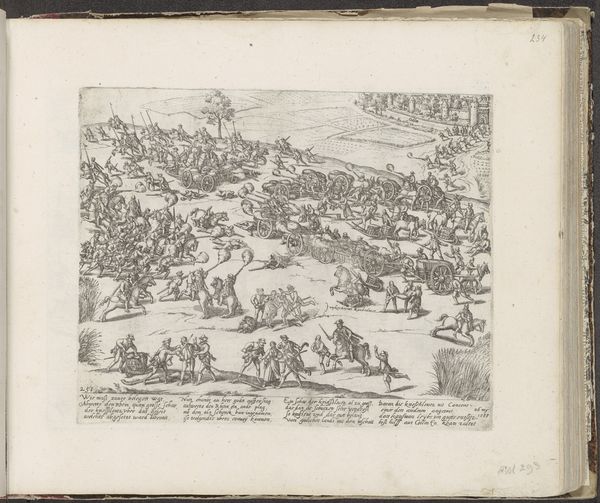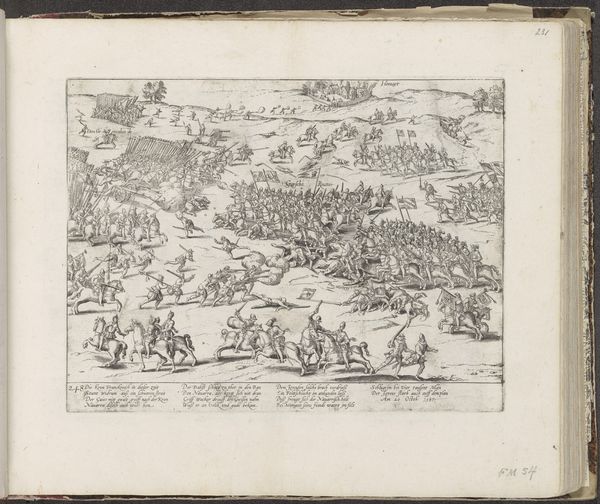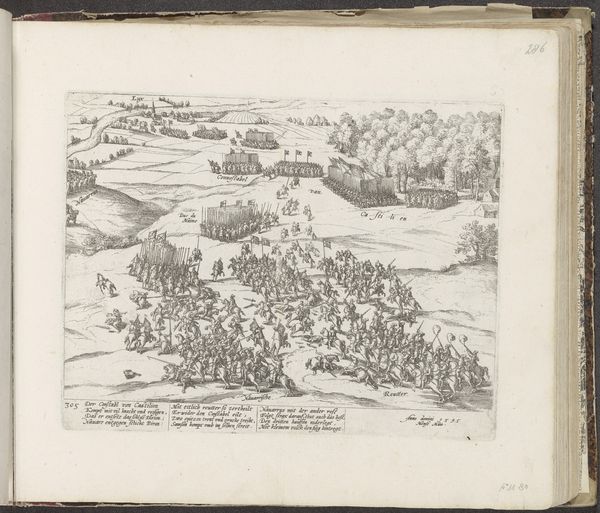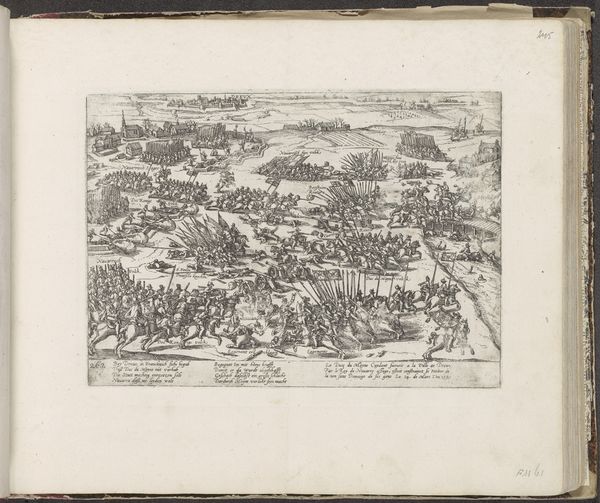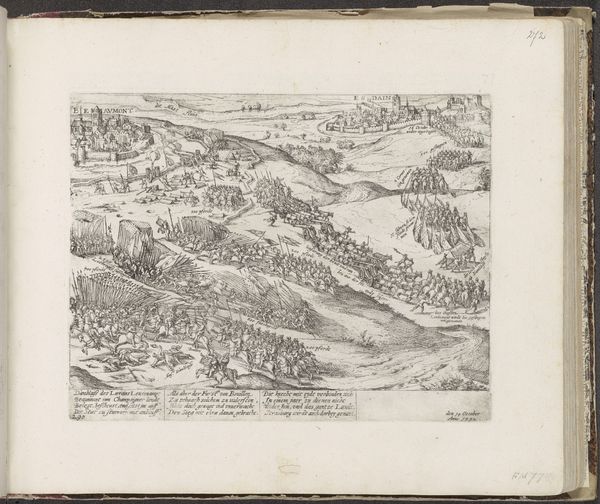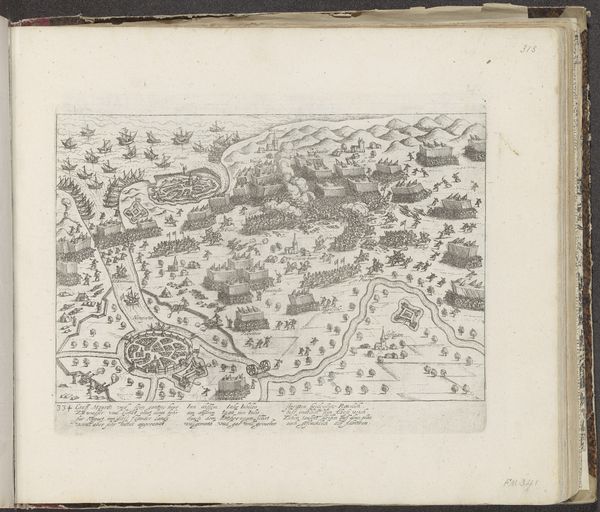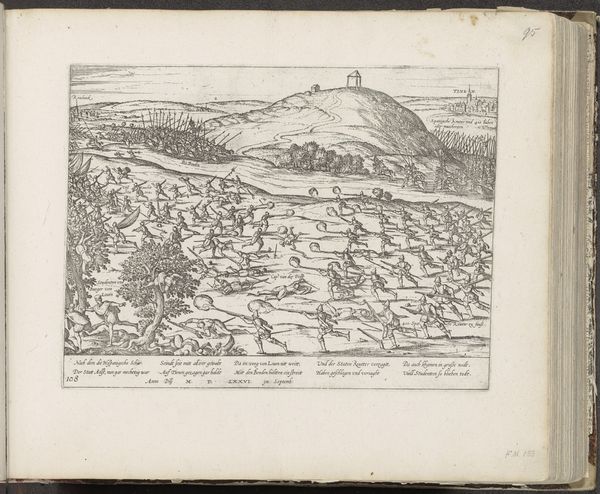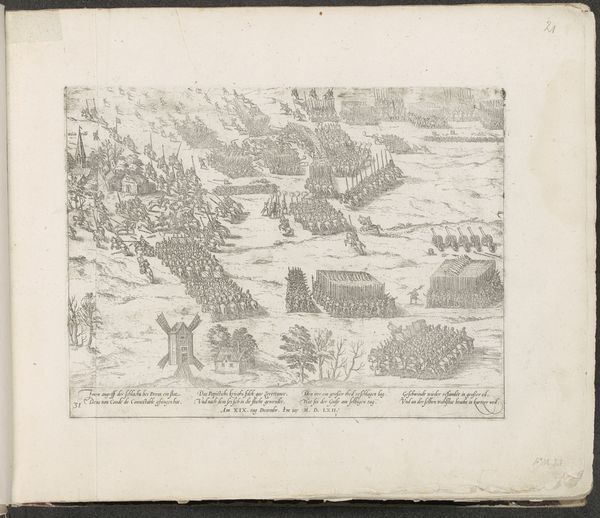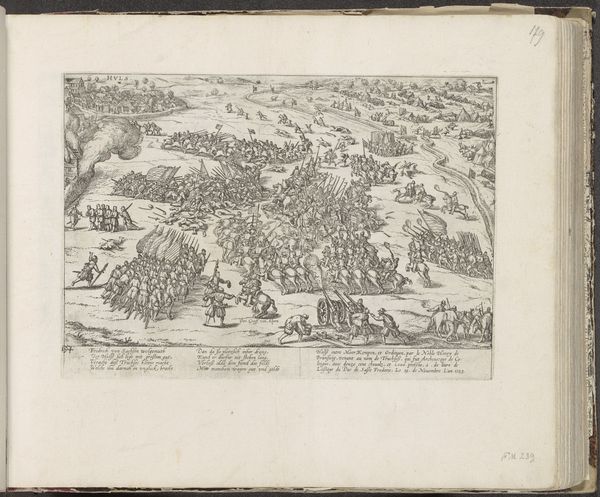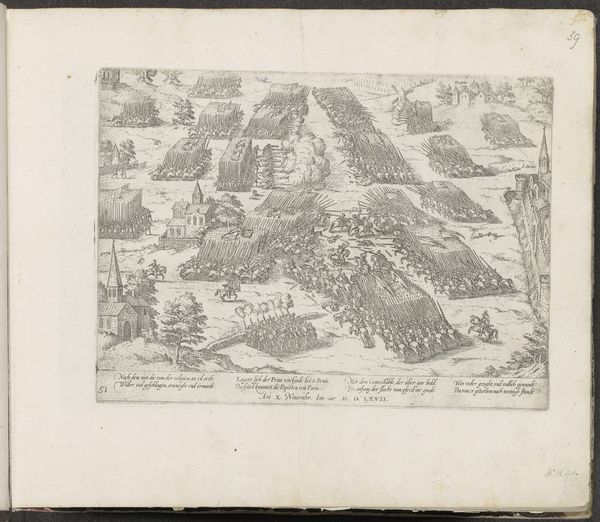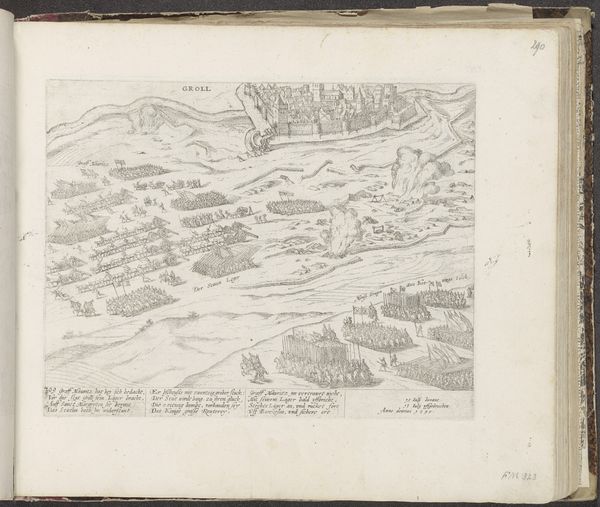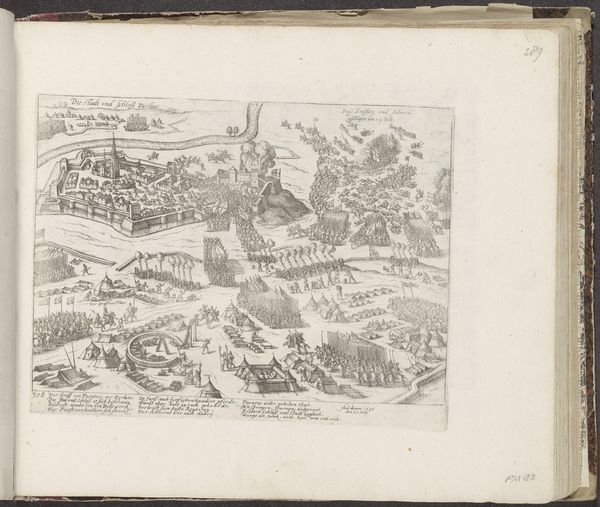
drawing, print, ink, engraving
#
drawing
#
pen drawing
# print
#
pen sketch
#
sketch book
#
personal sketchbook
#
ink
#
sketchwork
#
ink drawing experimentation
#
pen-ink sketch
#
pen work
#
sketchbook drawing
#
history-painting
#
sketchbook art
#
engraving
Dimensions: height 221 mm, width 277 mm
Copyright: Rijks Museum: Open Domain
Curator: What a whirlwind of lines and violence. It looks almost like a disturbing dance across the page. Editor: Indeed. We're looking at "Moord te Junkersdorf, 1586" by Frans Hogenberg, dating from approximately 1587 to 1591. This ink and pen drawing, functioning also as a print, depicts the grisly aftermath of a historical event, now held in the Rijksmuseum. Curator: The sheer number of figures is staggering. The labor involved in creating this image must have been immense. It speaks to the process of etching, almost a type of mechanical reproduction. Editor: Precisely. Hogenberg’s work existed within a specific historical and political context. Consider the function of this imagery in shaping public opinion. Prints like these disseminated information, or perhaps propaganda, across geographical and social divides. Curator: I’m also drawn to the material quality of the paper itself; the lines have an almost tangible quality against its surface. What kind of pens did Hogenberg likely use? The production of such tools in that era... that dictates the precision and texture possible, impacting the art itself. Editor: Good point. I think about how Hogenberg's workshop might have functioned—a business enterprise shaping historical narratives. The commodification of images like this and how it feeds the popular imagination. Think about its reception; this was far more accessible to a wider audience than painted works on canvas. Curator: The social commentary aspect is key. What kind of audience consumed this print, and how did their socioeconomic position impact their interpretation of violence depicted? Did this image promote fear, empathy, or something else entirely? Editor: Exactly. The Rijksmuseum context adds another layer. How does institutional display change the image’s function? Is it memorializing an event, warning against violence, or simply offering a spectacle for our consumption? Curator: Well, examining both the artist’s hand, and the material's origins brings the focus back to how the image gained its symbolic value. It highlights not only labor and skill, but also that delicate line between historical artifact and art object. Editor: Right, it's the relationship between production, context, and lasting impact that really makes the analysis compelling, wouldn’t you say?
Comments
No comments
Be the first to comment and join the conversation on the ultimate creative platform.
